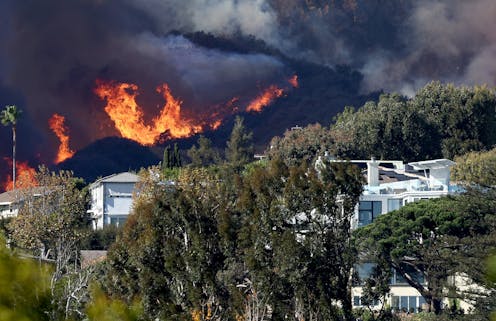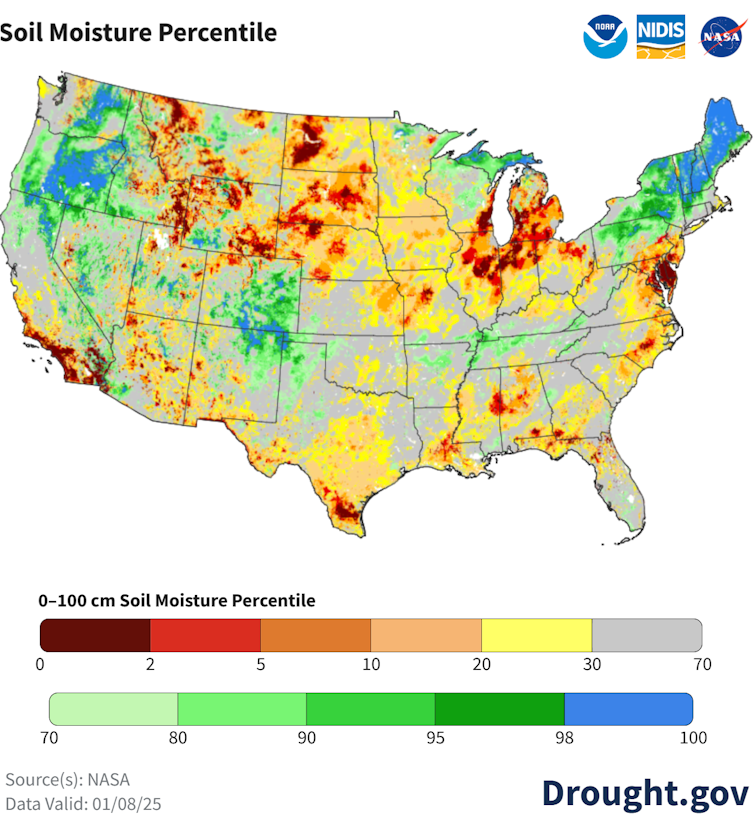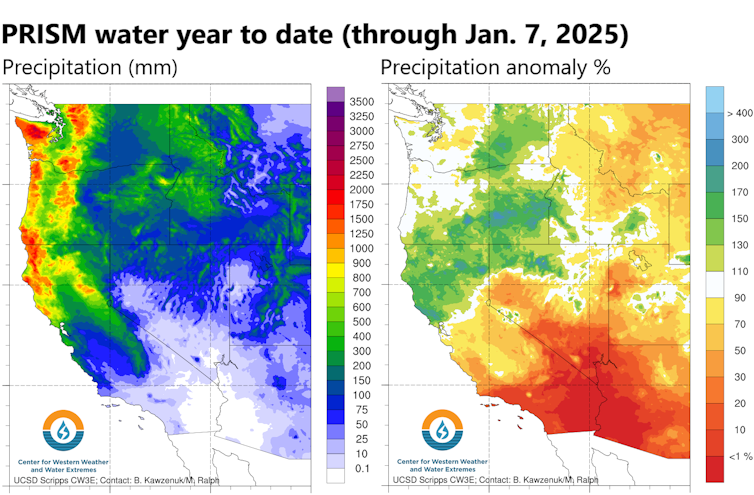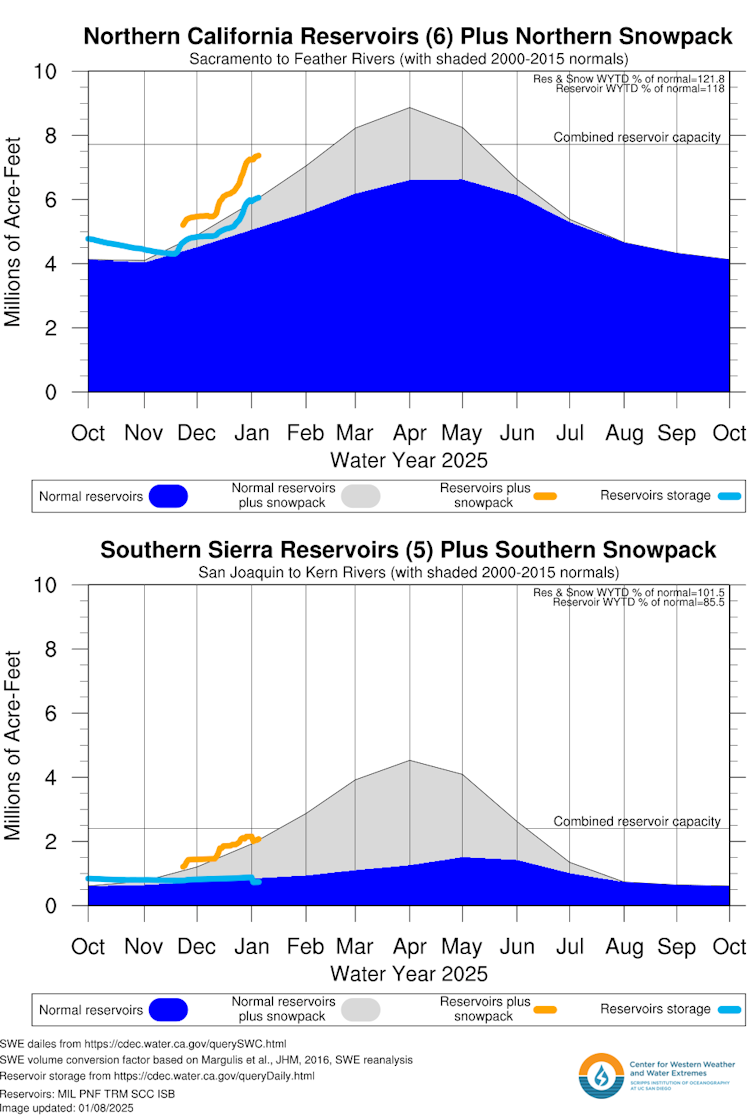Southern California is extremely dry, and that’s fueling fires − maps show just how dry
The state is seeing a sharp water divide this year, with lots of rain in the north while the south has stayed dry. A hydrologist explains what’s happening.

Dry conditions across Southern California set the stage for a series of deadly wind-driven wildfires that burned thousands of homes in the Los Angeles area in early January 2025.
Ming Pan, a hydrologist at the University of California-San Diego’s Center for Western Weather and Water Extremes, tracks the state’s water supplies. He put Southern California’s dryness into perspective using charts and maps.
How dry is Southern California right now?
In early January, the soil moisture in much of Southern California was in the bottom 2% of historical records for that day in the region. That’s extremely low.

When the air is warm and dry, transpiration and evaporation suck water out of the plants and soil. Dry vegetation can provide fuel for flying embers to spread wildfires, as the Los Angeles area and the surrounding hills saw in early January.
Hydrologists in California watch the sky very closely every water year, starting in October. That’s when California’s water year begins.
The state gets very little rain from May through September, so late fall and winter are crucial to fill reservoirs and to build up the snowpack. California relies on the Sierra snowpack for about one-third of its freshwater supply.
Southern California started out the 2024-25 water year pretty dry. The region got some rain from an atmospheric river in November, but not much. After that, most of the atmospheric rivers that hit the West Coast from October into January veered northward into Washington, Oregon and Northern California instead.

So, while Northern California’s water and snowpack conditions are in good shape, Southern California is not doing so well.
The Southern Sierra snowpack was starting to dip below normal in early January.

What can California expect for the rest of 2025?
The U.S. Climate Prediction Center’s seasonal outlook through March suggests that drought is likely to develop in the region in the coming months. The outlook takes into account forecasts for La Niña, an ocean temperature pattern on its way to developing in the Pacific Ocean in early 2025, that tends to mean drier conditions in Southern California.
However, not every La Niña affects California in the same way.
One or two big rain events could completely turn the table for Southern California’s water situation. In 2023, California saw atmospheric rivers in April.
So, it’s hard to say this early in the season how dry Southern California will be in the coming months, but it’s clear that people in dry areas need to pay attention to the risks.
Ming Pan receives funding from the California Department of Water Resources and National Oceanic and Atmospheric Administration.
Read These Next
Who thinks Republicans will suffer in the 2026 midterms? Republican members of Congress
The president’s party almost always loses seats in the midterms. More than two dozen Republican House…
New materials, old physics – the science behind how your winter jacket keeps you warm
Winter jackets may seem simple, but sophisticated engineering allows them to keep body heat locked in,…
Deepfakes leveled up in 2025 – here’s what’s coming next
After a year of fast advances, deepfakes are entering a new era defined by real-time interaction with…






